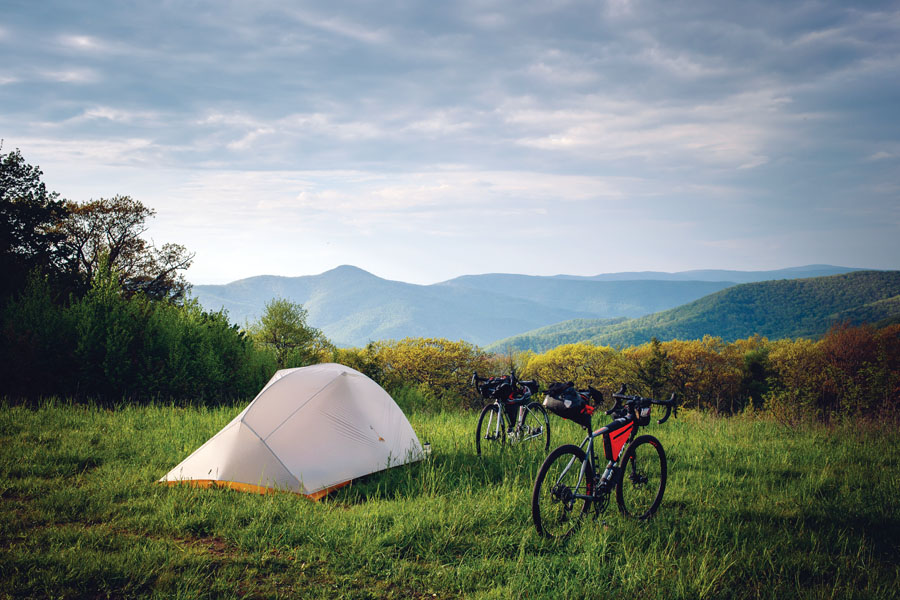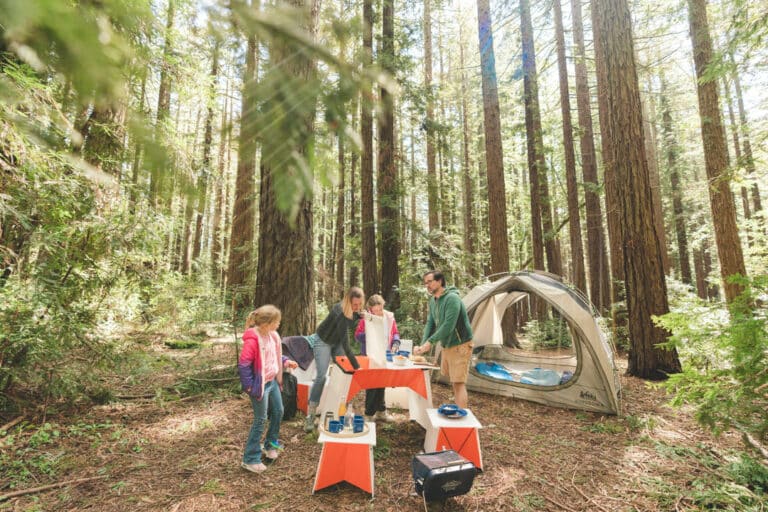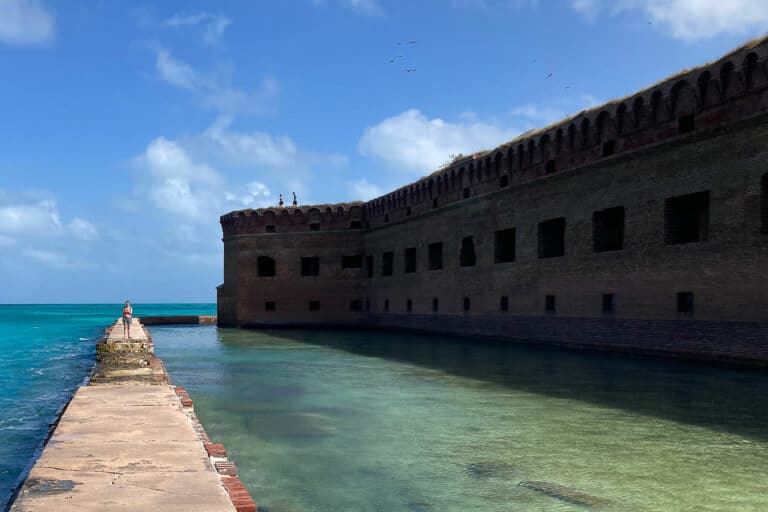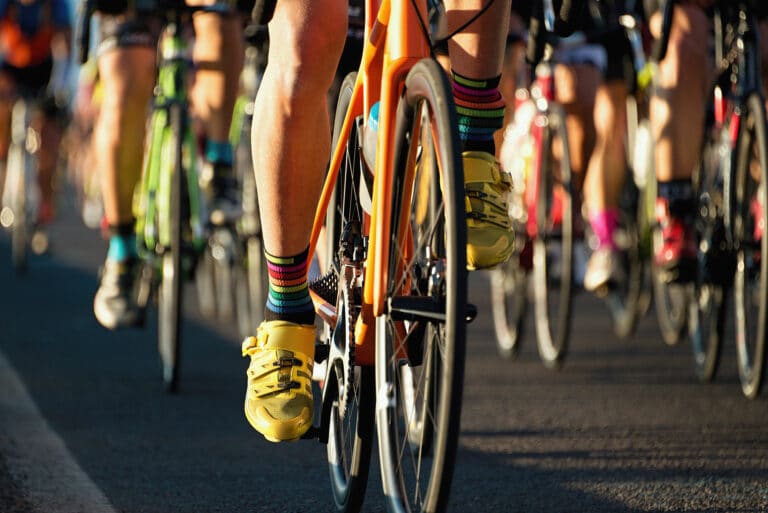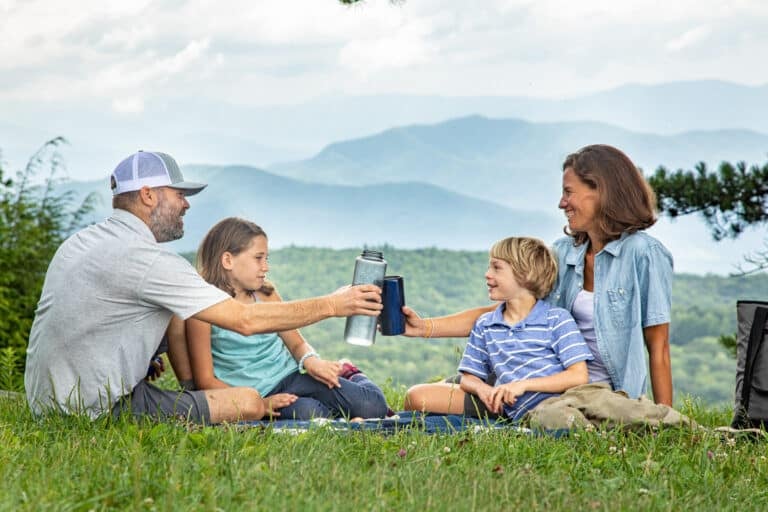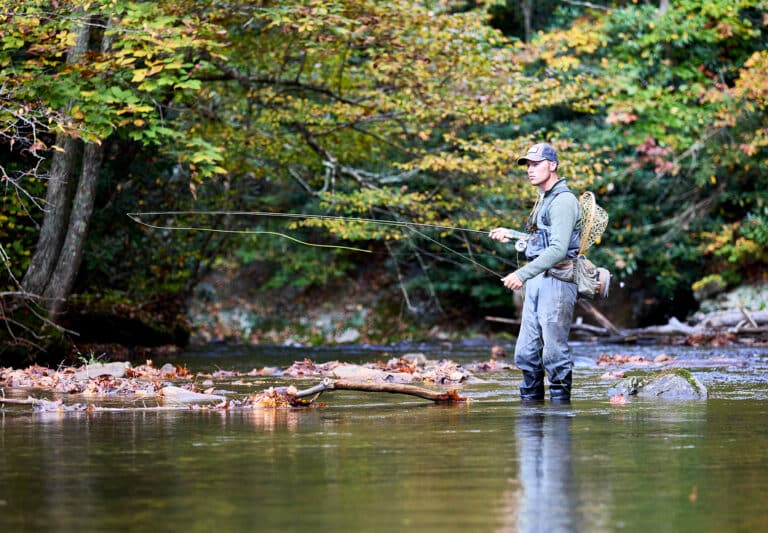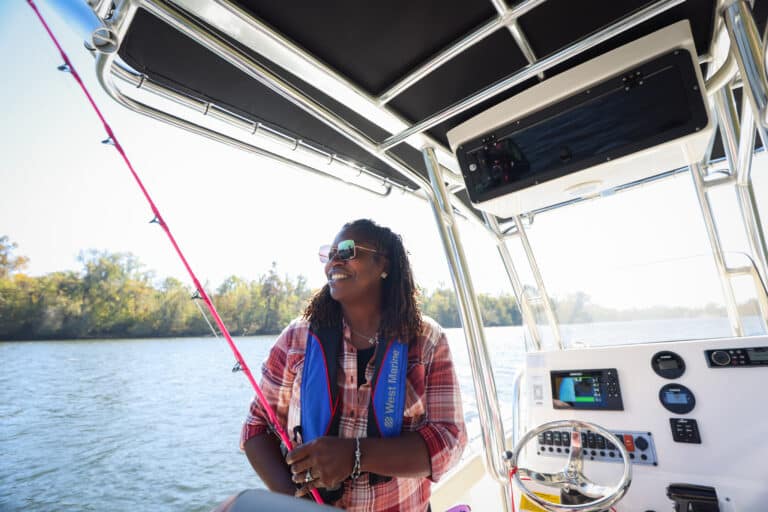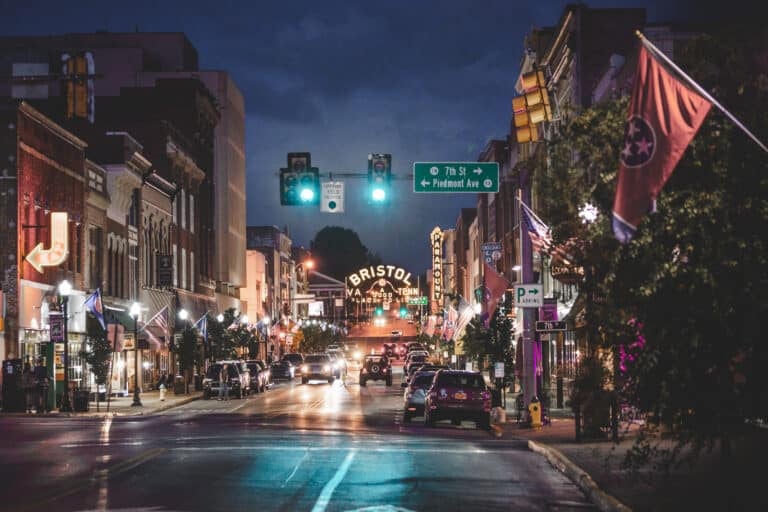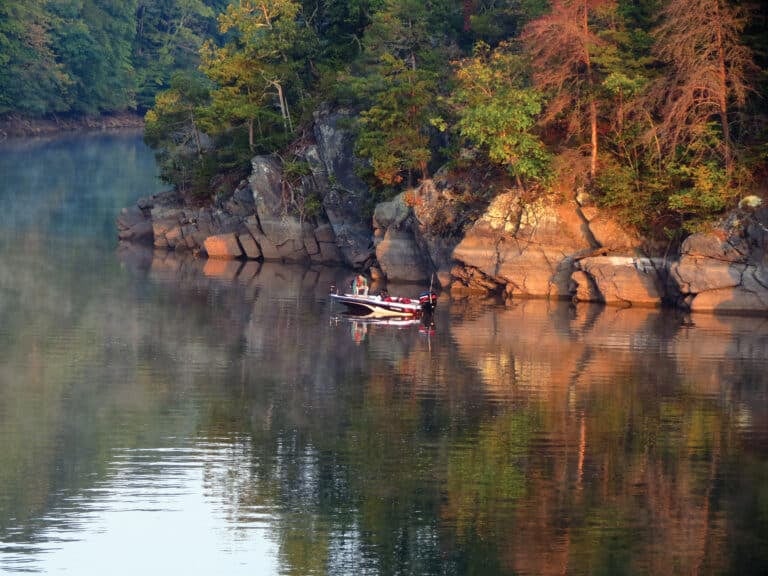From the very first mile, we were climbing. The morning’s stormy rain clouds had dissolved, leaving the hot sun to bake us in their wake. Steam rose from the tarmac, frying my still-winter-pale skin.
“I figure it’s either going to be a downpour or a sauna,” said Matt Kearns, Public Lands Specialist from the West Virginia Rivers Coalition. He inched past on his old-school touring bike. Its frame groaned under the weight of three loaded panniers. I could hear Matt’s labored breathing, could see the sweat already darkening the folds of his blue t-shirt. “I think we got the sauna.”
I trailed behind, my quads already weakened from the steady uphill grade. I cursed Matt for coming up with the idea, and me for agreeing to it, ‘it’ being a nearly 60-mile, two-day bikepacking trip around the proposed Birthplace of Rivers National Monument.
Side note—I’ve never gone more than 24 miles on a bike, let alone tried to self-support it for an overnight trip.
I glanced ahead, hoping to see the seemingly never-ending incline level off. It didn’t. I tried to swallow the disappointment. I was last in a line of five—my boyfriend Adam a speck at the lead, local riders Greg Moore and Eric Lindberg with the Pocahontas Trail crew close behind, followed by Matt, and then of course, there was me.
And I hate being last.
I could walk faster, I said aloud to no one in particular. I was seriously having doubts. But I didn’t stop. I kept grinding, one pathetic pedal stroke after another.
Just 24 hours prior, I was standing outside Blackwater Bikes in Davis, W.Va., gawking at the very Salsa Fargo I was riding. Shop owner Rob Stull had graciously tracked down the bike for the tour. Its dark green frame glistened in the sun. My limited bike experience aside, the thing just looked sweet—drop bars, 29-inch wheels, sleek frame, countless rack and fender mounts. That bike is a machine, I had thought—just riding the thing would make me fast.
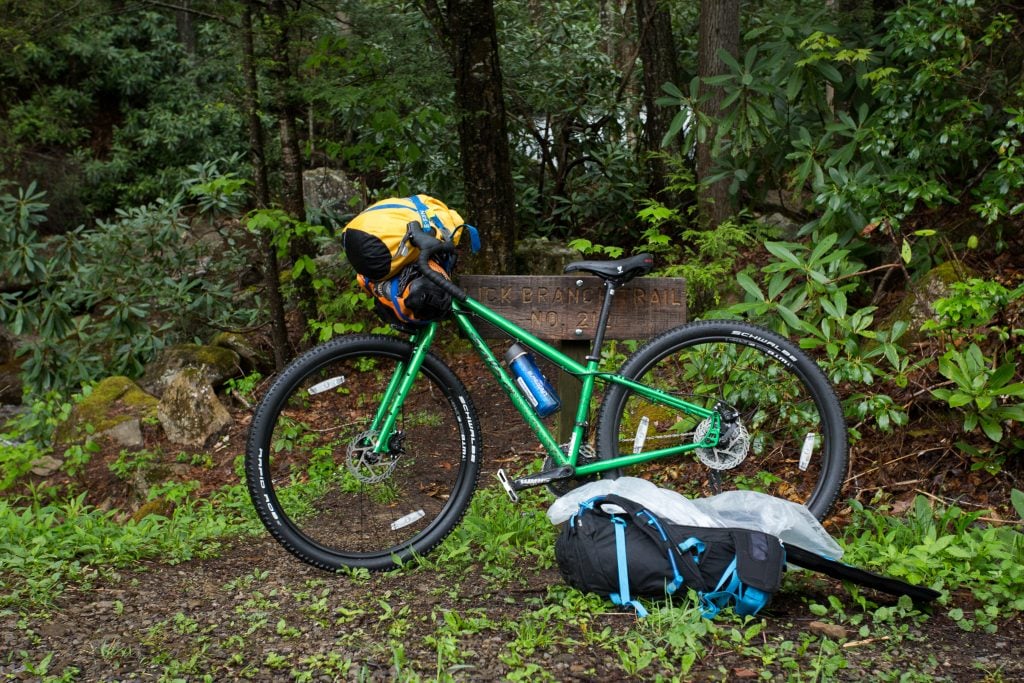
“This is the bike for off-road touring,” Rob confirmed.I swelled with confidence, envisioning the 60-mile ride passing with ease. Maybe later I’d try tackling longer, harder rides. Maybe the Great Divide Trail. Maybe I’d pioneer my own transcontinental route. The possibilities were endless, really.
By the time I finally lugged my sunburnt (I thought it was supposed to rain), sweating, sorry self to where the crew was breaking at 4,551 feet, I forgot about the damn bike. Bravado gone, I chastised myself for so naively thinking this would be a cake walk, or ride.
I should have just walked.
But then, there it was, the striking view of the Williams River winding below the overlook, sweeping through the rolling ridgelines like paint strokes. The only thing better than sitting there snacking on M&Ms and basking in the views of the Allegheny Highlands was knowing that mostly, the worst of the climbing was over.
I made it.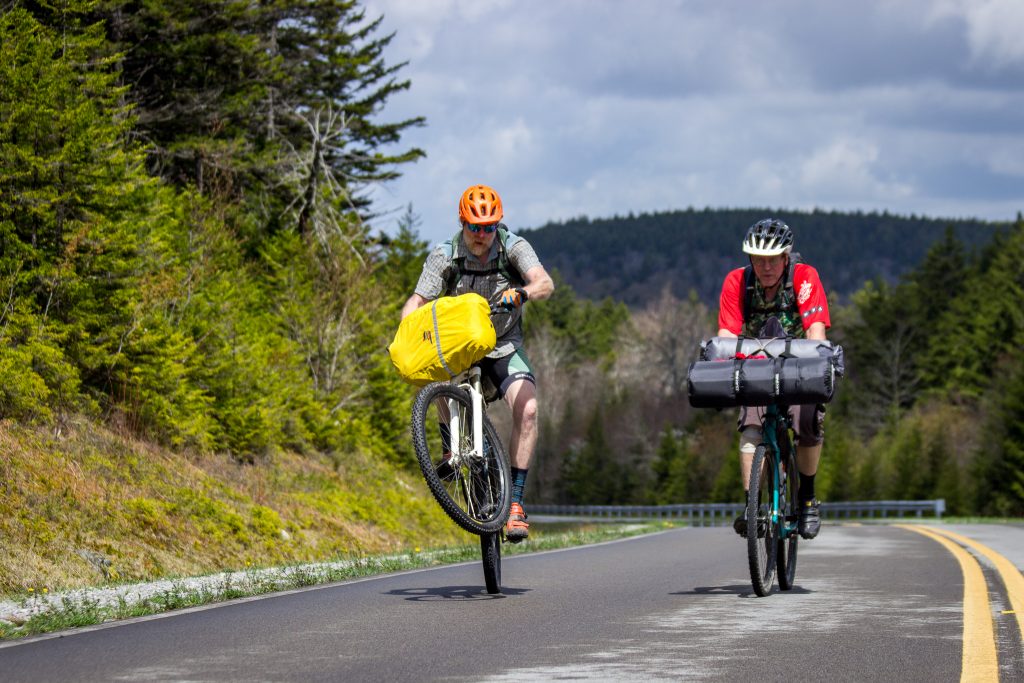
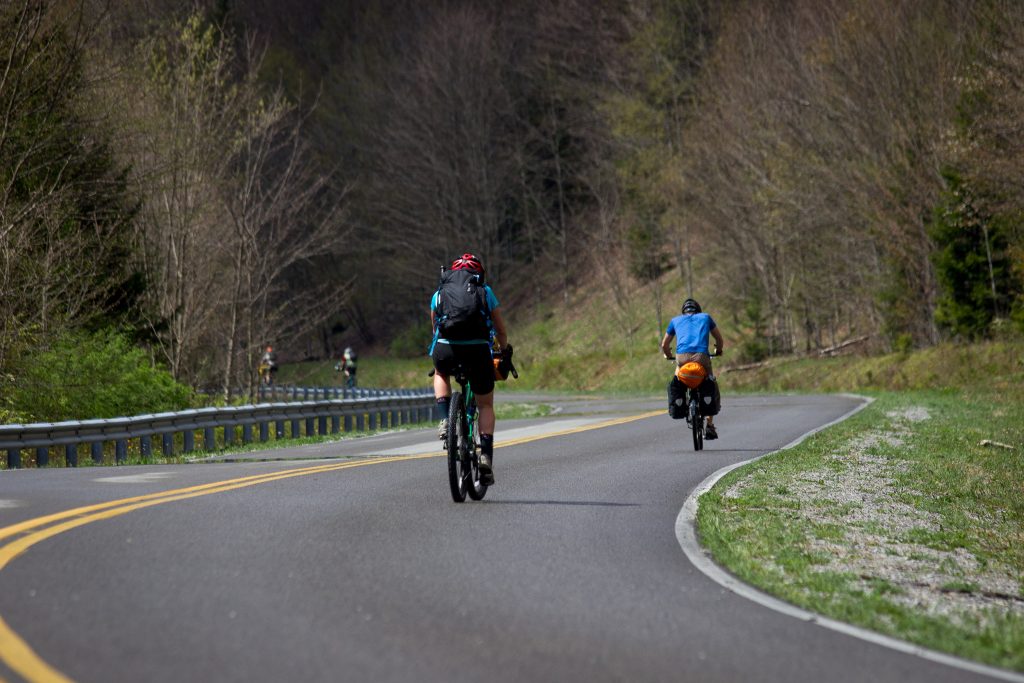
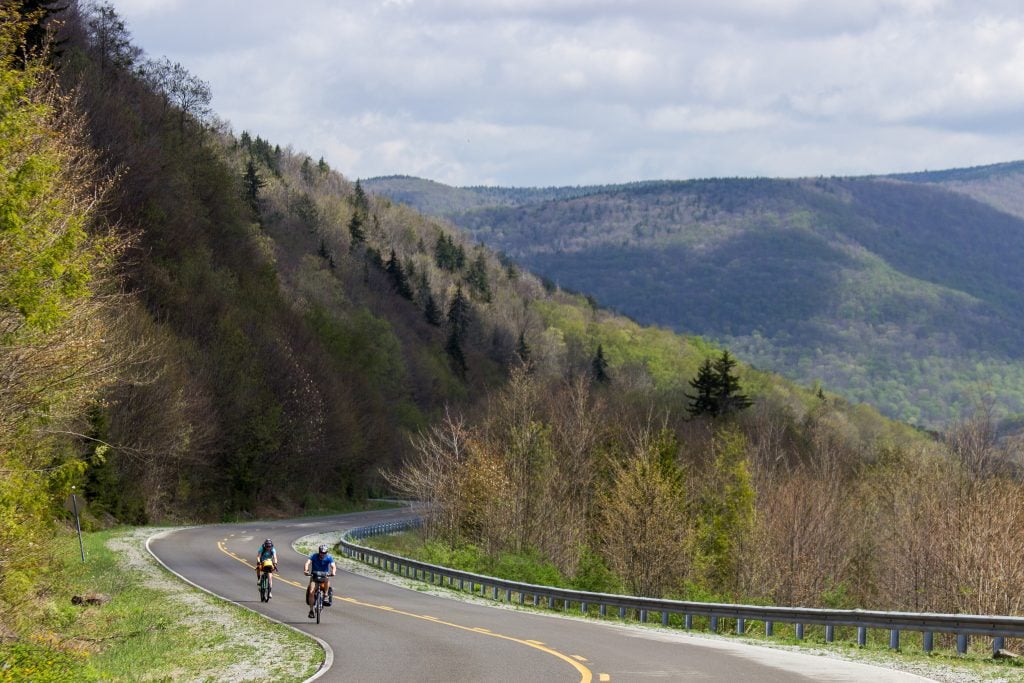
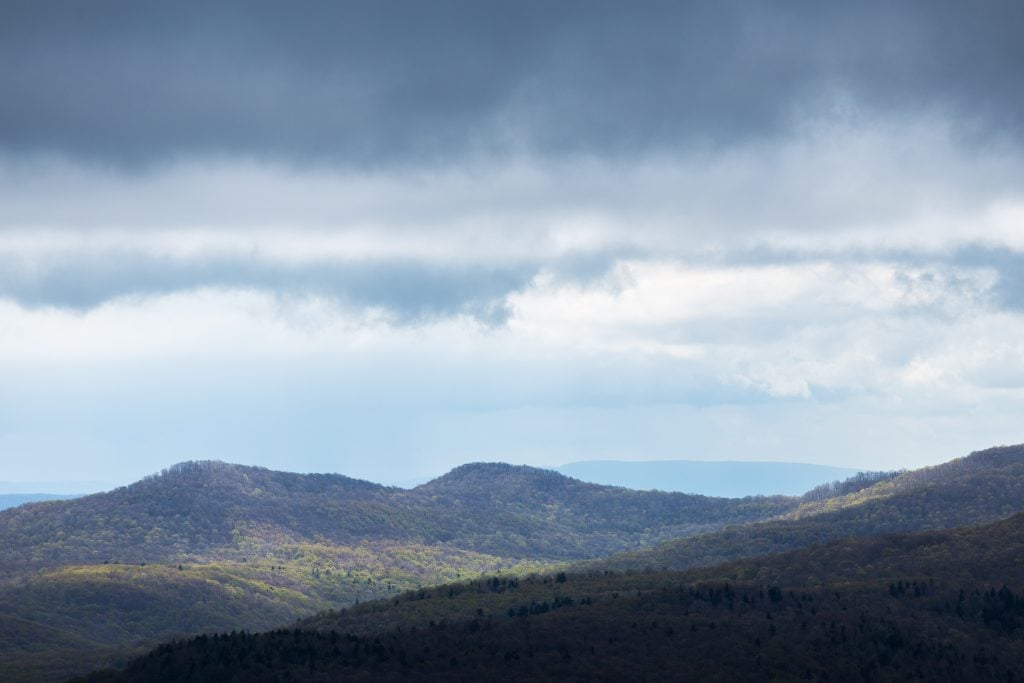
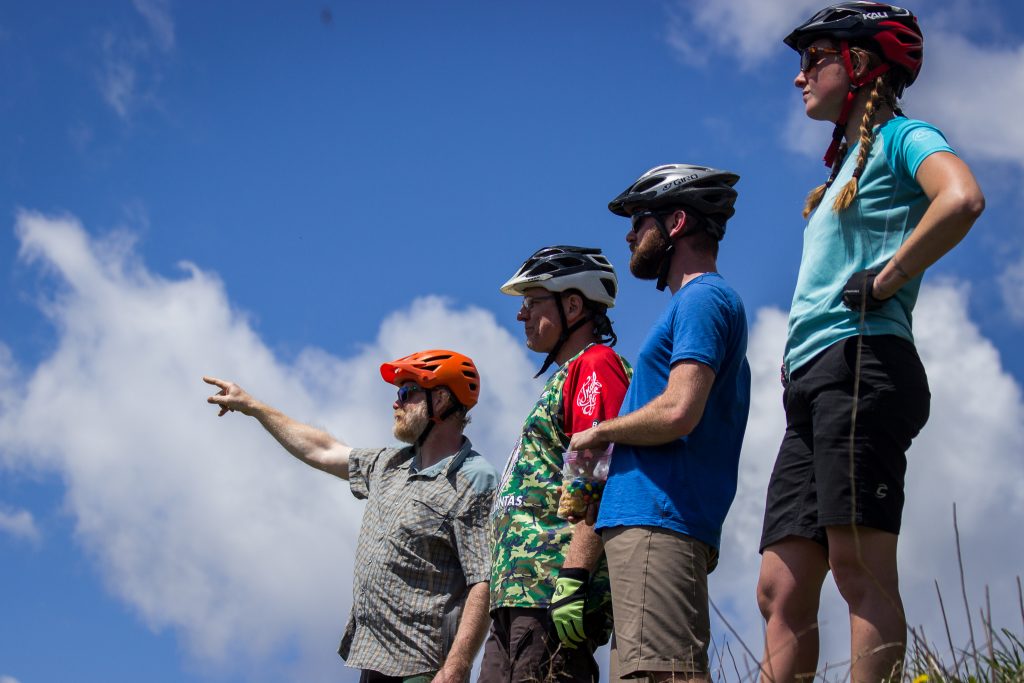
Like kids on a snow day, we cruised down the remaining 17 miles to camp in glee. The miles came fast and easy, the pavement turned to gravel. We cruised through thick stands of red spruce, alongside surging rivers and streams, between lush understories layered in every shade of green imaginable.
We perused the Cranberry Glades Boardwalk, stopping to admire the pitcher plants and hawks. We filled our water from springs and harvested ramps from the forests. The forecast had called for a 40 percent chance of rain (which in early May in West Virginia, most likely means 100 percent), but the sun never stopped shining. The day was glorious.
Just a few miles from Tumbling Rock Shelter, our camp for the evening, we passed by a pair of local anglers on bikes. Clearly, they were using their rides out of convenience more than anything. Poles stuck out haphazardly, crammed into the empty spaces between wet boots, bulky Coleman sleeping bags, full-size grills, lawn chairs, and canvas tents, all of which was ever-so-precariously dangling from their rusted bikes.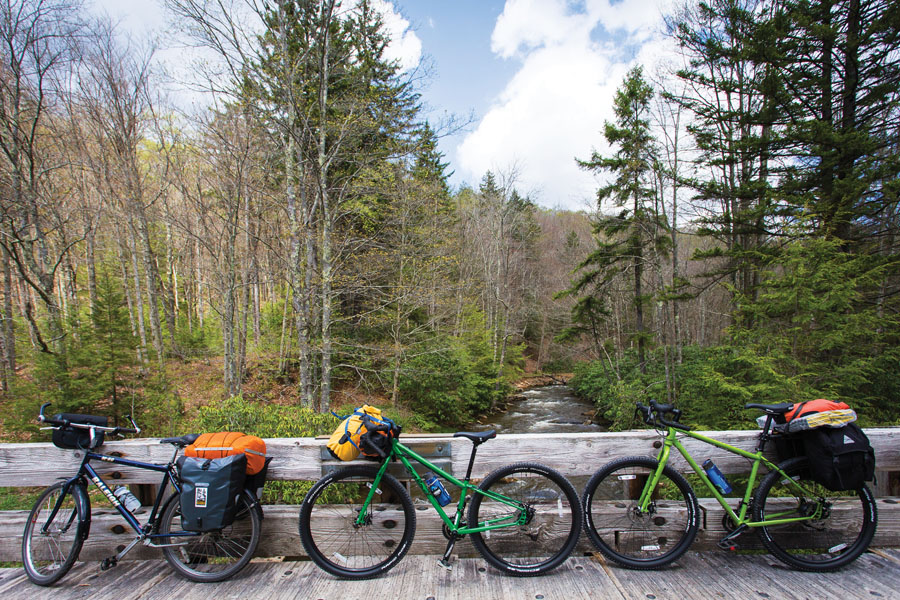
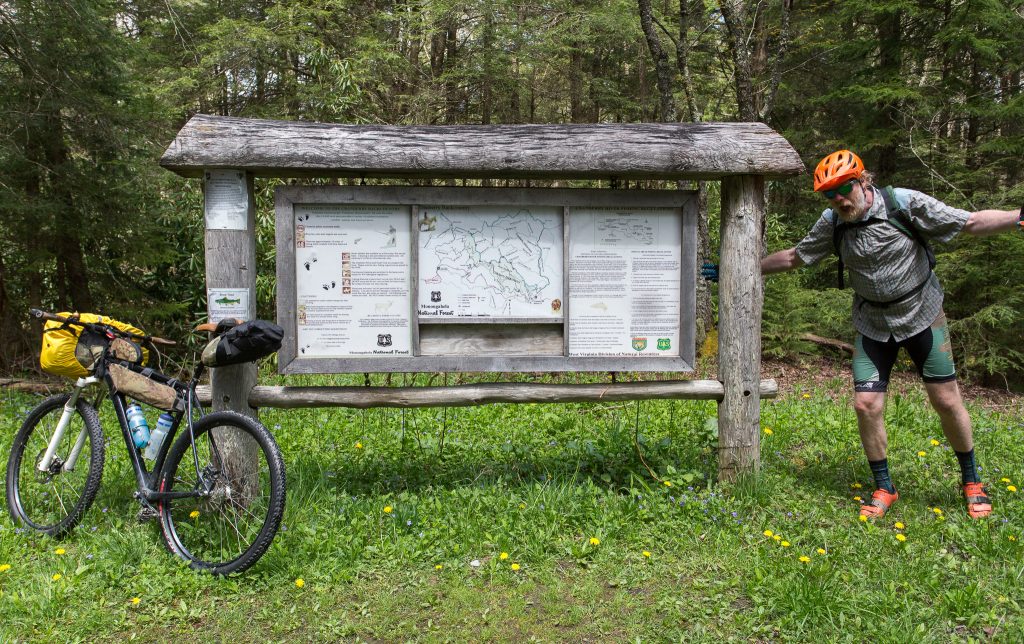 I looked down at my handlebars to the two dry bags bulging under my NRS cam straps. Suddenly my makeshift bikepacking bags didn’t seem so bush-league anymore.
I looked down at my handlebars to the two dry bags bulging under my NRS cam straps. Suddenly my makeshift bikepacking bags didn’t seem so bush-league anymore.
“I wouldn’t be surprised if they had a TV in there,” Greg whispered as we rode on.
The five of us were a motley crew at best. Greg, 45, and Eric, 64, looked the most competent, Greg sporting a Specialized single speed and Eric on a Salsa Warbird, both decked out in the latest bikepacking bags. Adam and Matt sported paniers, while I settled on lugging everything I couldn’t squeeze into my drybags on my back. The weight of my camera gear was starting to rub my lower spine raw.
Eric knew my pain. Sometime in the late ‘60s, Eric, then 16, had set out on his first “bikepacking” trip from Hollywood, Fla., to Jonathan Dickinson State Park. Armed with little more than a heavy backpack and a couple bucks, he made it work, cruising 75 miles through quiet backroads and never-ending sand dunes. He was hooked. A decade later, he rode 1,000 miles from central Florida to Tennessee, self-supported on his bike. Comparatively, this 60-mile jaunt around his West Virginia backyard was like child’s play.
By 2 p.m., we arrived at camp. Thunder rumbled in the distance. We hustled to collect firewood before the inevitable storm came. Adam and I opted for a grove of hemlock trees to hammock under while the rest of the crew posted up in the shelter. The Cranberry River coursed along the banks, heavy but clear from recent rain. I peeled back my socks to soak my feet in its crystal cold flow. Eric moseyed a little upstream, shedding clothes as he went.
“Hope you don’t mind if I strip down for a dip,” he said, more as a courtesy warning than anything.
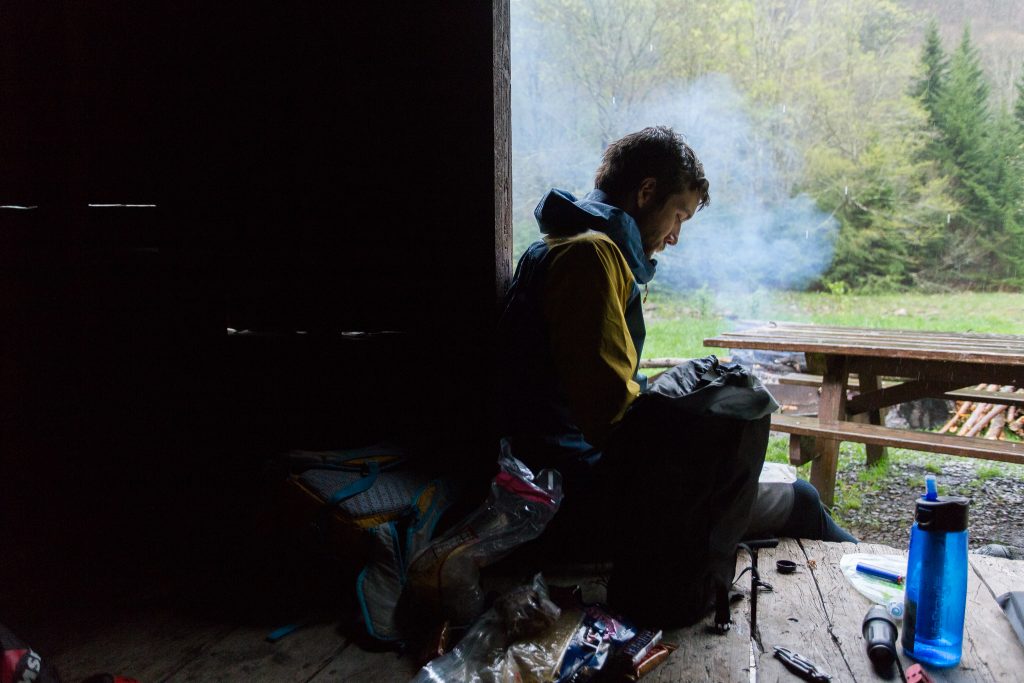
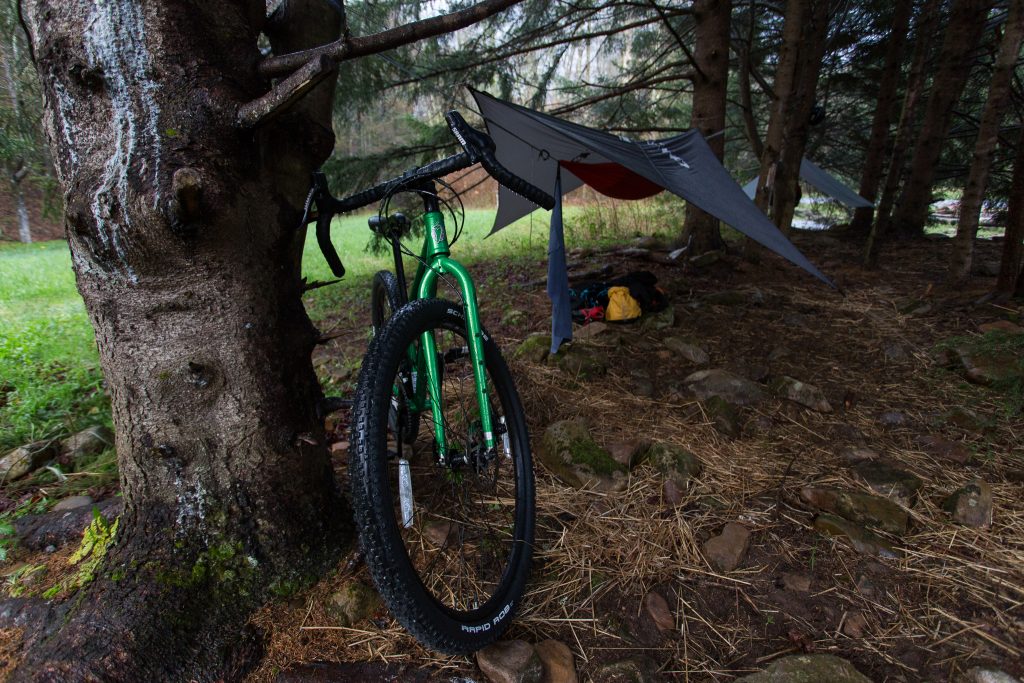
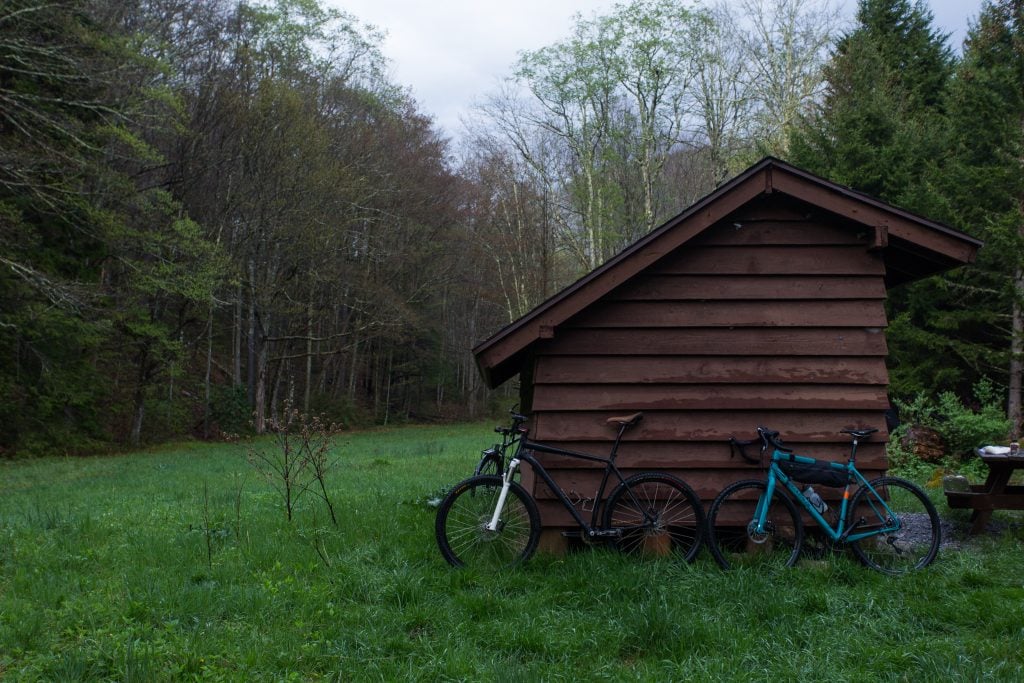
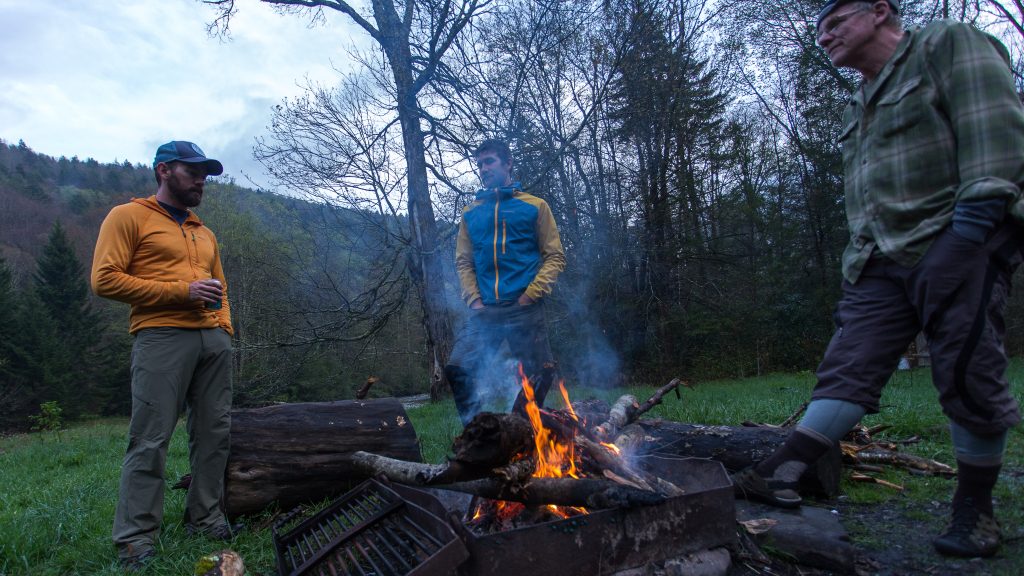 The evening passed slowly, simply. We made dinner, stared at the fire, listened to the rain dribble down the shelter’s tin roof. Eric pulled a bag of red wine from his pack. We filled my dinner bowl to the brim, passing it around like a ceremonial chalice, laughing and sharing stories. It was the first time any of us had met, with the exception of Adam, Matt, and I. Between the hard-earned miles, the childish bliss of camping under the night sky, and maybe a little bit of heady wine, we hardly felt like strangers.
The evening passed slowly, simply. We made dinner, stared at the fire, listened to the rain dribble down the shelter’s tin roof. Eric pulled a bag of red wine from his pack. We filled my dinner bowl to the brim, passing it around like a ceremonial chalice, laughing and sharing stories. It was the first time any of us had met, with the exception of Adam, Matt, and I. Between the hard-earned miles, the childish bliss of camping under the night sky, and maybe a little bit of heady wine, we hardly felt like strangers.
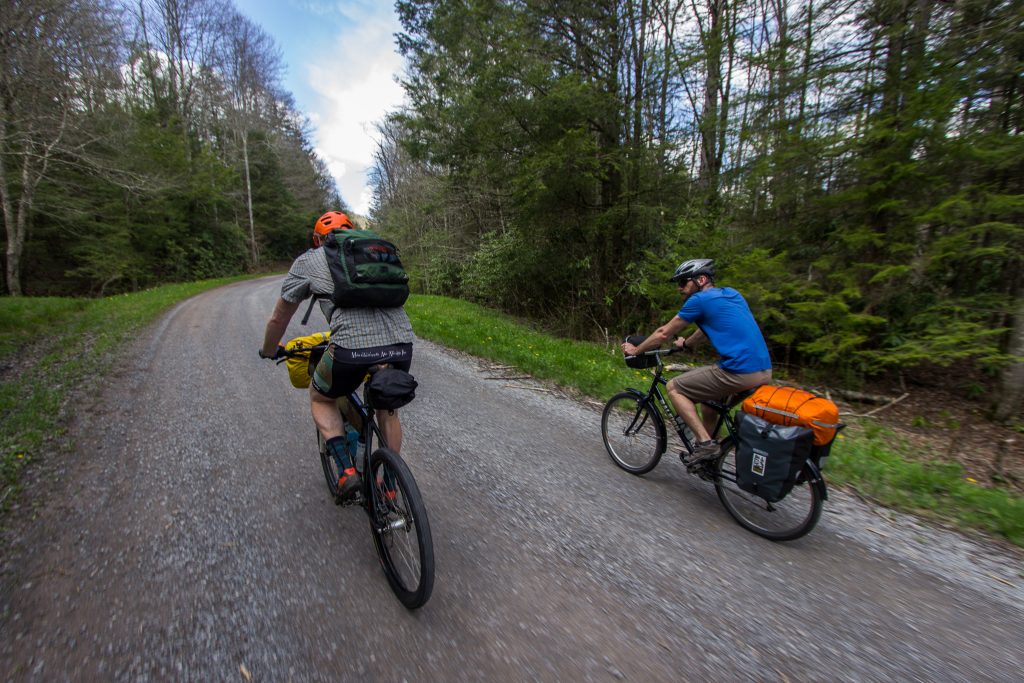
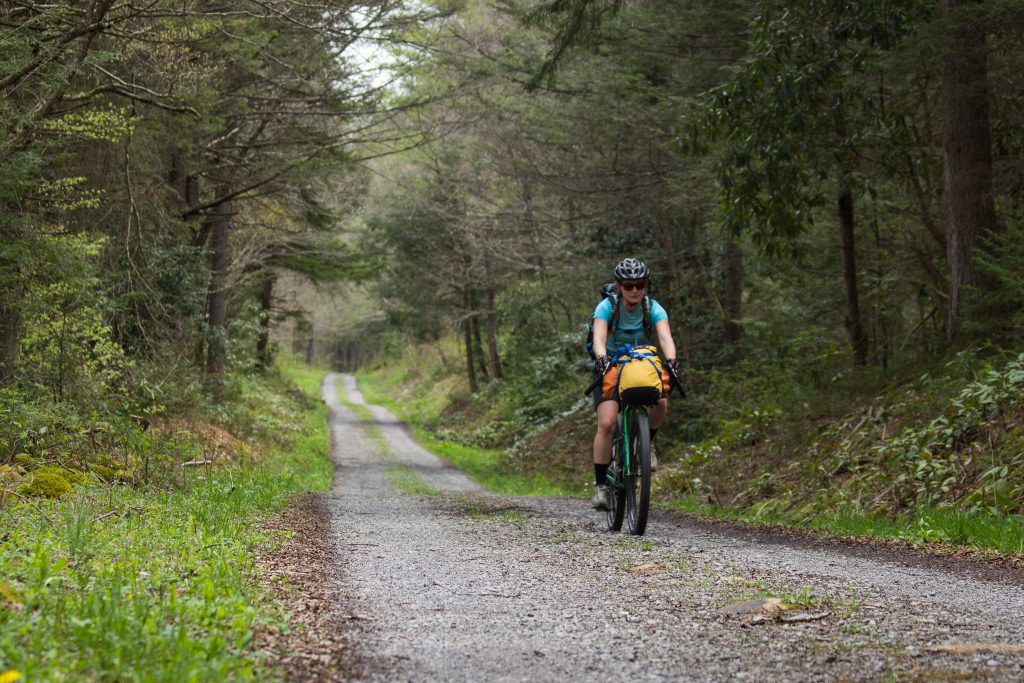
The next morning dawned cool and foggy. The canopy sagged from the moisture, splattering fat raindrops on my tarp. By the time we were packed and pedaling, the sky had unleashed a steady drizzle. We zipped shells to chins, and, heads hunkered, pedaled on as misty rain turned spitting turned downpour.
We passed by expansive fishing camps with canvas tents and wood stoves and mess halls, stopping only to admire the gushing waterfalls as they poured from the mountainside into the Cranberry. Soon, the level grade peeled away from the river, climbing, again, toward Bishop Knob.
Adam and Greg took to the lead, churning the moderately short, but steep, grunt uphill in 20 minutes flat. At the top, they saw a bear. The rain subsided. The muggy sauna returned. Eric and I shed our shells, damp from sweat. I tried focusing on the verdant forest and mossy earth radiating in the rain’s absence, but the gravel going was slow, my legs like uncooked spaghetti. I could feel the frustration bubble up inside, brimming to the brink of total meltdown.
And then, just as quickly as it had started, the climb was over.
“It’s all downhill from here!” Matt shouted over his shoulder, zooming in line behind Greg and Eric. Adam and I followed suit, flying downhill for three miles straight, unable to keep from smiling despite the muddy gravel flying off our wheels, caking our faces and rear-ends.
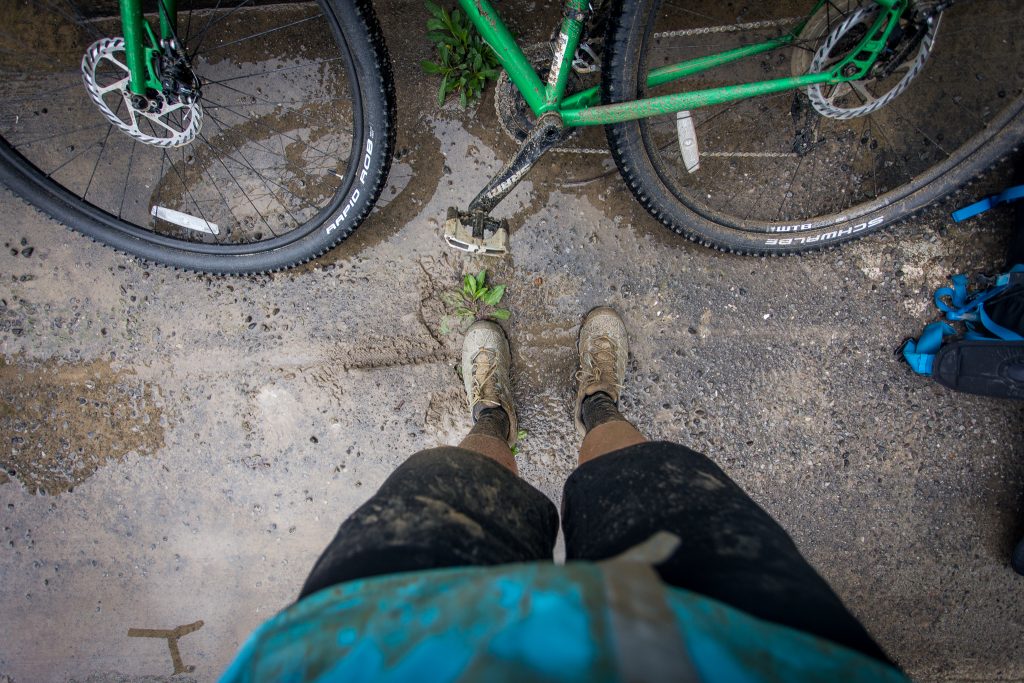
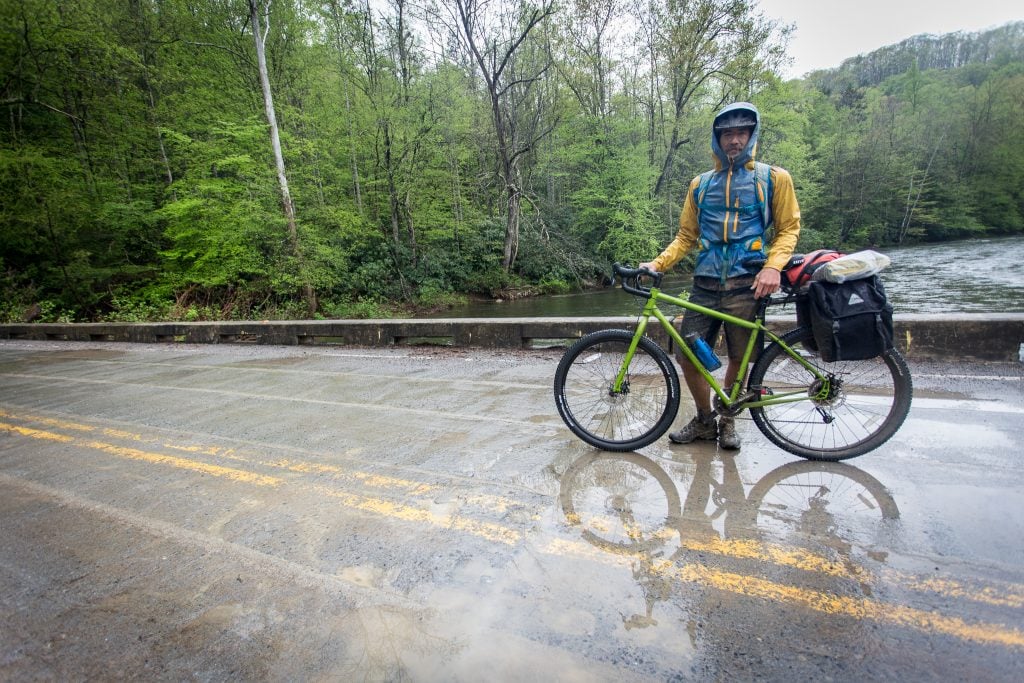
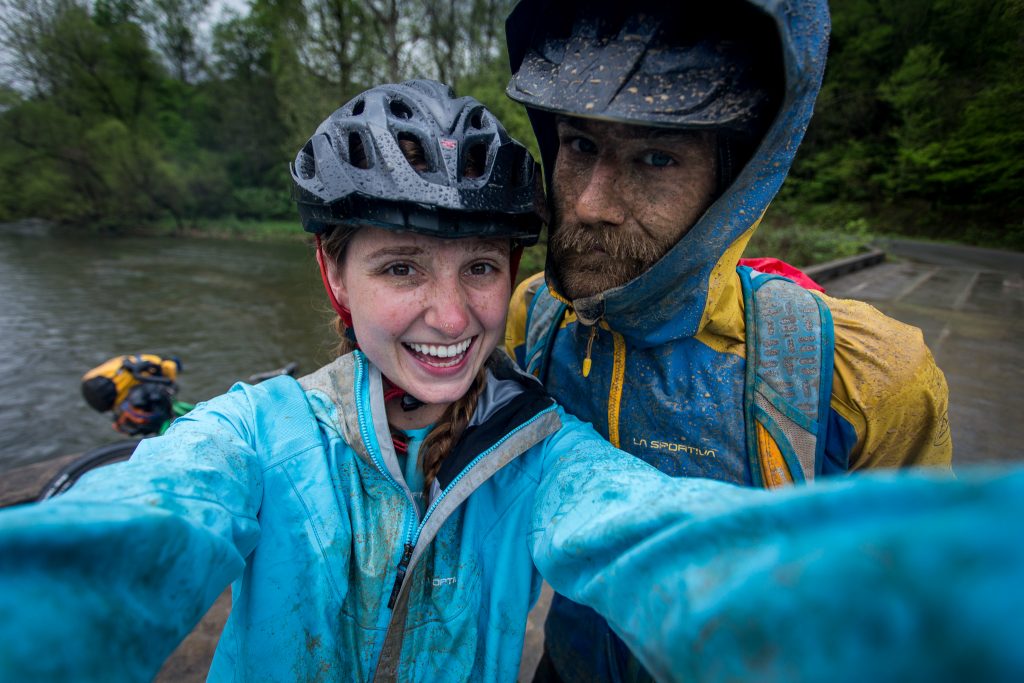
Just a few hours later we were back at Tea Creek Campground where our cars sat waiting. Soaked and sore, I felt empowered, accomplished, like I truly earned the ice cold pale ale Eric offered me.
“My old lady calls it ‘getting Lindberged,’” Greg said when I tried to decline a second beer from Eric. There would be no refusing. Not this time. Eric was in the mood for celebrating. He shoved the beer into my hand. We toasted to the trip, the company, and the national monument we all hoped would be finalized in the coming year. The doubts I’d felt just 24 hours earlier evaporated, becoming a warm and fuzzy memory, an essential part of the adventure. I was sad to see the trip’s end. I’d almost be willing to climb up the Highland Scenic Highway right then and there just to keep the journey going, I thought.
Key word there being, almost.
Off the Couch
Two months after that initial foray into the world of bikepacking, I found myself in the Oveja Negra Threadworks shop in Salida, Colo. Created by Lane and Monty Willson, a husband-wife team who started making 100 percent American-made bikepacking bags out of necessity, the Oveja Negra brand prides itself on durability, functionality, and accessibility. When they’re not cranking out handmade bikepacking and commuter bags, they’re repairing gear for walk-ins and established organizations like Outward Bound.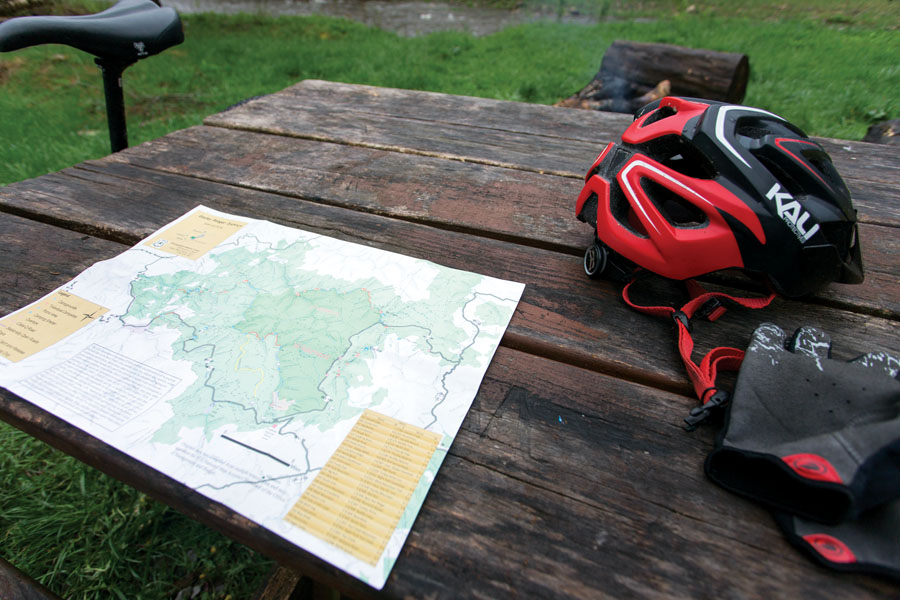 Lane shared a story with me of one such walk-in, an East Coaster with a Wal-Mart getup (including the bike) in need of a zipper repair on his equally cheap bag. Hesitantly, Lane agreed, but when she saw his too-big Wal-Mart pants and matching belt, she had to ask—Dude, what’s up?
Lane shared a story with me of one such walk-in, an East Coaster with a Wal-Mart getup (including the bike) in need of a zipper repair on his equally cheap bag. Hesitantly, Lane agreed, but when she saw his too-big Wal-Mart pants and matching belt, she had to ask—Dude, what’s up?
The gentleman was en route, by bike, to a West Coast friend suffering the health consequences of an inactive lifestyle. With nothing more than a Wal-Mart discount and an urgent impulse to change his own life, Lane’s customer got off the couch, dropped a few hundred bucks on what he thought he might need for a cross-country biking trip, and hit the road. The added holes on his belt were proof alone that the trip was indeed working miracles.
“That’s the beauty of bikepacking,” says Rob Stull, owner of Blackwater Bikes back in Davis, W.Va. Like Lane’s customer, Rob grew up piecemealing his own bike-supported adventures along the C&O Canal without any formal “bikepacking” knowledge. “You don’t necessarily have to go out and get a bikepacking-specific bike and bikepacking-specific bags and gear. You can make a trip happen with the stuff you might find in your gear closet, like freaking bungee cords and dry bags.”
So in the name of bungee cords, electrical tape, and Wal-Mart bikes, we’ve compiled some tips, tricks, and trips for novice bikepackers in need of a little direction to get started.
Tips, Tricks, and Trips
How do I get started? Where do I go? Do I need a new bike? All of these questions, and then some, answered by our bikepacking experts Logan Watts, founder of bikepacking.com, and Stephen Proffitt, product manager for Shenandoah Bicycle Company.
Tips
#1 Ask yourself—What do you want out of this experience?
For Shenandoah Bicycle Company’s Stephen Proffitt, the answer to this question is essential. Some people may want to do long distances, go light, and ride fast, while others may want to enjoy the journey, tackle fewer miles, and never leave the security of their backyard. And that’s okay. Before you start wracking up thousands of dollars on your credit card, Proffitt says to stop, think, and listen, not to the sales person pitching the latest Revelate bag, but to yourself.
“Bike people often say, ‘Well, this is what I’d do,’ or ‘This is what you want,’ and that’s so aggressive to a customer,” Proffitt says. “The real question is, ‘Hey, what are you looking to get out of this experience? What are your goals?’ Bikepacking is basically the hiking of the bike world. There are super big nerds out there who want the lightest setup, but at its heart, it’s using existing gear and trying to strap it to your bike in awesome ways.”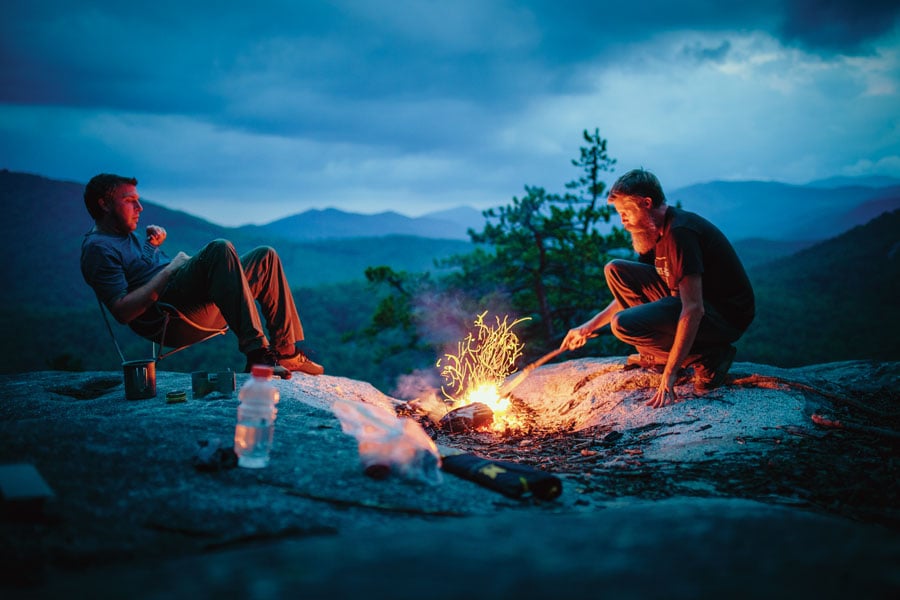 #2 Just go do it.
#2 Just go do it.
“You don’t really need a lot of stuff to do it,” says bikepacking.com founder Logan Watts. “You just need to go do it.”
If that requires shedding gear as you ride, which Watts and his wife found themselves doing during their first long-distance ride from Mexico to Panama, that’s fine. Over time, you’ll refine your setup, Watts says, but don’t worry about getting it right your first go.
“The best adventure, your first adventure, should be to just load up everything you think you need in a backpack for one night, fill your water bottle holders, get on your bike and ride,” adds Proffitt. “When you go home, lay out the things you didn’t touch and next time, don’t bring them.”
#3 Keep it simple.
While month-long journeys across the Ugandan countryside certainly sound, and are, epic by default, that doesn’t mean you have to tackle a big escapade in order to have a good time. In fact, Watts says, long weekend trips could be all you need to satisfy your itch.
“I always tell people some of the best adventures can be found right in your backyard,” Watts says. “Just a few months ago, [my wife and I] were temporarily living outside of Raleigh. In that part of eastern North Carolina, there’s nothing. No mountain bike trails. No mountains.”
So one week, Watts decided to craft an overnighter to cure his wanderlust. Less than an hour away, he landed on Croatan National Forest off the coast of North Carolina. He laid out his route, hit rubber to road. And the result?
“It was amazing. I found this perfect camp spot on the beach.”
Moral of the story? Adventure is closer at hand, and simpler to achieve, than you may be inclined to believe.#4 Get creative.
And if you’re not the creative type, consult YouTube, Pinterest, or any number of bikepacking forums (bikepacking.com even has a section purely designated for cheap, DIY bikepacking “hacks”). Learn to make a shelter out of a Wal-Mart tarp and the bike you already own. Rig a seat post bag without dropping $200. The Internet as a resource is a beautiful thing. Use it.
#5 Remember that no one setup is the right setup.
What may work for your ultralight guru of a friend may be completely unrealistic for you. Totally normal. Unlike traditional team sports, bikepacking is an individual endeavor, even when riding in groups.
“At its heart, all of this is somewhat grassroots,” Proffitt says about bikepacking. “You’re going to have the things that work for you and your personality and your packing style. Some people don’t bring a tent. Other people aren’t going to be able to function like that. If you require bringing a trailer to bring all of your things the first time, that’s fine.”
The point is to have fun with it and experiment. You can’t really go wrong.
Tricks
#1 Use electrical tape.
So your fork doesn’t have any water bottle mounts? Big deal. Grab a couple rolls of electrical tape and some water bottle cages and tape away. Be sure to tape an extra tube somewhere on your bike. The best part about electrical tape is that it doesn’t leave any residue when you remove it. Plus, you can get some super funky colors. Style is everything, even when using electrical tape.
#2 Invest in dry bags.
If there’s one thing you should buy right off the bat, it’s a couple of heavy-duty dry bags. More important than being able to strap everything to your bike is that your gear also stays dry. Plus, dry bags are inherently easy to attach to any bike. Just cinch them down with a couple of straps to the handlebar, or loop the clip upside down under the seat post and strap tight.
#3 Love Tyvek.
If you don’t love and use Tyvek already, you should. Ground cloth, bivy, heck I’ve even seen a guy rocking a Tyvek kilt before. It’s versatile, it’s durable, it’s lightweight, it’s packable, and most importantly, it’s cheap.
#4 Make every inch count.
Size does matter. Eventually you’re not going to want to ride technical singletrack with a heavy pack strapped to your back. As you hone your packing system, look to the bike itself for storing supplies. That empty triangle in the middle of your bike can hold an amazing amount of stuff. Bikepacking.com has instructions for a DIY frame bag (for the crafty and cheap), but you can also purchase a half size or full frame bag for around $100.
#5 Think “multipurpose.”
This is where it really starts to get fun. Can you go without, say, tent poles, by using your bike’s handlebars to stake out the fly? Can your tire pump still function if you wrap a bunch of gorilla tape around it for emergencies (that stuff fixes everything)? The lighter you can go, the better those climbs are going to feel.
Oh, and bring latex gloves. You might not necessarily come across a bloody limb, but you probably will encounter a broken chain. Keep those paws clean.
“I often get made fun of for doing so, but it’s something I’ve learned commuting by bicycle over the years,” says Proffitt. “Nice clothes and greasy hands aren’t friends.”
Trips
• Travel in company and learn the basics of bikepacking with Shenandoah Bicycle Company! Upcoming bike campout: October 22-23
• Get schooled in backcountry bikepacking clinic-style with Mulberry Gap’s seasoned guides. This north Georgia-based biking facility offers four-day Cohutta Backcountry Bikepacking 101 and 201 courses in the spring and summer ($100 each) for intermediate riders looking to get some helpful pointers on everything from packing to route planning. Or check out Mulberry Gap’s two-part, guided tour of the Trans North Georgia September 18-26. Visit mulberrygap.com for more information!
Birthplace of Rivers National Monument
Marlinton, W.Va.
Distance: 58.8 miles
Difficulty (1-10): 4
Type: Loop/overnighter
Terrain: 50 percent gravel, 50 percent paved
Highlights: Ramp season, riverside riding, shelter camping, mountain views
Directions: http://bit.ly/CranberryWilderness
Two Gorges Gravel
Morganton, N.C.
Distance: 75 miles
Difficulty (1-10): 4
Type: Loop/overnighter
Terrain: 55 percent unpaved, no singletrack
Highlights: Expansive scenery of Linville Gorge, timing the ride with rhododendron-in-bloom, a 20-mile gravel descent (f’real), Wilson Creek’s wilderness feel and stunning landscape
Directions: http://bit.ly/TwoGorgesGravel
Slate Springs
Harrisonburg, Va.
Distance: 52 miles
Difficulty (1-10): 4
Type: Loop/overnighter
Terrain: 75 percent gravel, 25 percent paved
Highlights: Meadow Knob camping, Reddish Knob descent, ample spring access and wildlife viewing
Directions: http://bit.ly/SlateSprings
Iron Mountain Trail
Damascus, Va.
Distance: 43 miles
Difficulty (1-10): 5
Type: Loop/overnighter
Terrain: 50 percent paved, 50 percent singletrack
Highlights: 6-mile long downhill, shelter camping, creek crossings, rock gardens, classic Appalachian green tunnel
Directions: http://bit.ly/IronMTNTrail or http://bit.ly/IronMTN100 for singletrack only (51.4 miles; route of Iron Mountain 100K)
The Appalachian (Beer) Trail
Pisgah National Forest, N.C.
Distance: 108 miles
Difficulty (1-10): 7
Type: One-way/four-day minimum
Terrain: 50 percent unpaved, 50 percent singletrack
Highlights: Ultimate tour-de-western-North-Carolina for craft beer and singletrack both, Black Mountain Trail’s epic downhill, Slate Rock overlook
Directions: http://bit.ly/AppBeerTrail
Trans North Georgia
South Carolina to Alabama
Distance: 342 miles
Difficulty (1-10): 7.5
Type: One-way/five-day minimum, seven-day average
Terrain: 72 percent unpaved, 18 percent singletrack, little paved
Highlights: Solitude, waterfall and creekside riding, Cohutta Mountain views, Stanley Gap and Bear Creek singletrack, rest and reprieve at Mulberry Gap Mountain Bike Getaway at mile 220
Directions: http://bit.ly/TransNGA
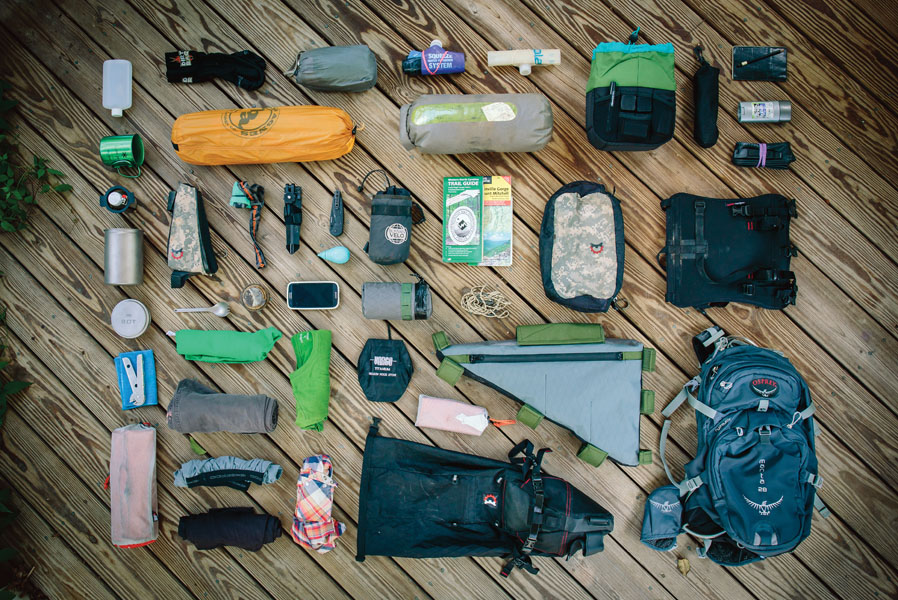
Go-To Gear
It’s safe to say Logan Watts has spent more time on a bike than in a car since he and his wife sold their belongings and hit the road in 2012. A native of Winston-Salem, N.C., Watts has ridden from Mexico to Panama, and in Uganda, Rwanda, South Africa, Morocco, Southern Spain, and that’s just the start of the list. Watts sometimes posts up in Brevard, N.C., but mostly, he’s still chasing bikepacking routes around the world. His gear recommendations are tried and true. Check out a few of his favorites below!
“If anything is better than duct tape, it is the Voilé Strap.” Ranging in size from 15 inches to 32, these polyurethane straps are typically used by skiers, but their functionality extends well beyond holding your skis together or crafting an A-frame on your pack.
Salsa Anything Cage & Bag ($30; $32)
Anything goes with this cage and bag combo. Designed for riders looking to attach everything from lightweight gear items like sleeping pads and dry bags to large water bottles and Gatorade jugs, this unconventional bike rack gives you the ability to make every inch count.
Oveja Negra Snack Pack ($45-55)
Now available in an XL size, this top tube bag is the perfect solution for storing caloric fuel, spare tubes, tools, the latest and greatest (and biggest) iPhone on the market. It even fits a pint of Ben and Jerry’s ice cream. We tested it ourselves.
Revelate Designs Handle Bar Harness ($75)
Already have an ample supply of durable dry bags? Pop ‘em in a handle bar harness and hit the trail! This harness accommodates dry bags up to 20 liters in size and even works on drop bars. Tents, sleeping systems, packrafts, mini kegs. Whatever your need, this harness can hold it.
Oveja Negra Super Wedgie Frame Bag ($90-100)
Utilize the space beneath your top tube without compromising the accessibility of a seat tube water bottle cage. The Super Wedgie comes in small (4+ liters) and large (6+ liters) sizes to fit whatever ride you’re rockin. Complete with a hydration/wire port and a separate map pocket, this bag will accommodate the needs of multi-day excursions, long day trips, and everything in between.
Revelate Designs Sweetroll Handlebar Bag ($100)
100 percent waterproof and customizable, these handlebar bags come in small, medium, and large sizes for every type of load, bike, and trip.
Made with upcycled nylon, this seat pack is not only one-of-a-kind but also eco friendly. The Hauler provides all of the room you need to lug your camping gear, but can also be converted into a messenger bag for bikepackers who use their bikes for commuting.
Acre Hauser 14L Weatherproof Hydration Pack ($215)
Whatever the weather, this little ditty can handle the heat (or rain, sleet, snow, hail, crushing wind, etc.). Count on this totally sealed pack to keep everything dry on the inside while still allowing your back to breathe with the help of perforated panels and shoulder straps.
